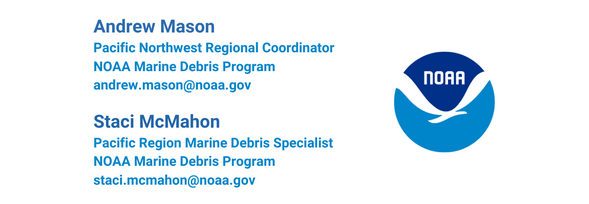Partner Updates
The articles written by partners are not the opinions of the National Oceanic and Atmospheric Administration (NOAA) and do not imply that NOAA recommends or endorses those expressed by partner organizations. These opinions and their associated actions will be carried out by interested partner organizations and are not affiliated with NOAA or the NOAA Marine Debris Program.
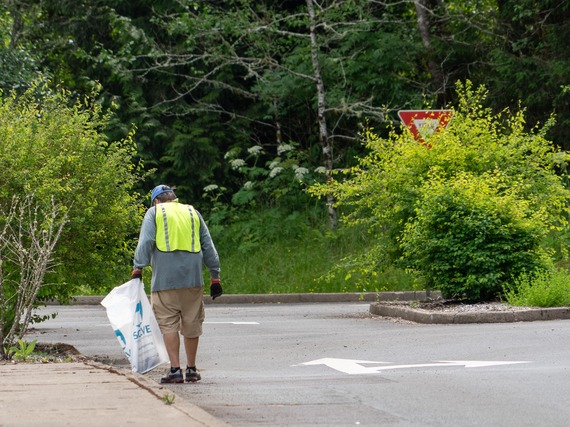 (Photo credit: MidCoast Watersheds Council).
Siletz River Cleanup: Volunteers Make a Difference!
On Saturday, June 8th, the MidCoast Watersheds Council hosted its annual river cleanup on the Siletz River. Volunteers from across the region joined to remove trash from Alder Island to Moonshine Park, ensuring a healthier river for fish and humans alike. Among the items pulled from the water were three mattresses, numerous tires, and countless pounds of trash that would have otherwise turned into marine debris.
After hours of dedicated work, volunteers celebrated their efforts with a BBQ, enjoying the sense of accomplishment that comes with making a positive impact on our watershed. The MidCoast Watersheds Council organizes two annual cleanups: the Siletz River in spring and the Salmon River in the fall.
Stay informed about future events and learn more about watershed restoration on the Oregon coast by signing up for updates here.
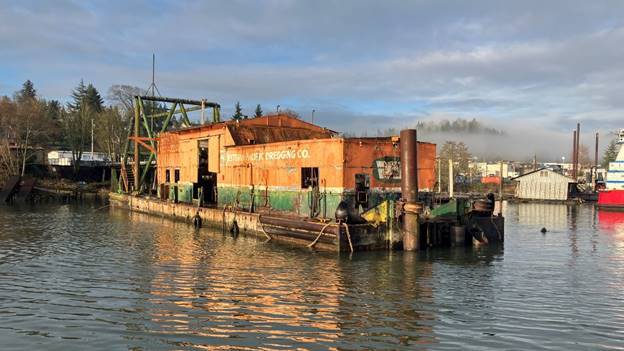 Stern of former Dredge Herb Anderson (Photo credit: Kevin McAfee, DSL).
Oregon seizes abandoned dredge in Columbia River
The Herb Anderson was a ~115’ cutter suction dredge that once helped clear the navigation channel of the Cowlitz River after the 1980 eruption of Mt. St. Helens filled it with sediment and debris. The deteriorating remains of the dredge have been occupying Oregon-owned submerged land without authorization since at least 2017. Located along the working waterfront of Rainier, OR, this large ADV became increasingly concerning due to its situational instability and potential environmental impact. In April 2024, the Oregon Department of State Lands (DSL) contracted with a salvage company to secure the dredge in place and initiated a legal process to seize the dredge. In June 2024, DSL obtained legal authority to dispose of the dredge. Salvage and disposal are anticipated to take place in the fall of 2024.
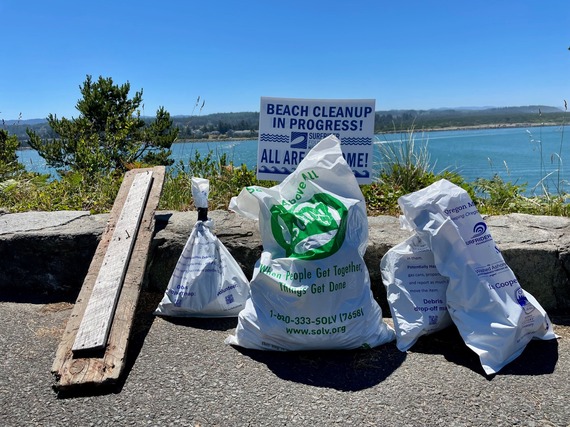 All are welcome at our cleanups (Photo credit: Skye Whitney).
Surfrider Volunteers tackle the “Dirtiest Beach
Day of the Year” in Lincoln County
We are thrilled to announce the remarkable impact of the Freedom from Marine Debris Project, generously funded by the NOAA Marine Debris Program. With the support of SOLVE, local municipalities, businesses, community groups, and nonprofits, we were able to address the aftermath of Fourth of July festivities, which annually result in the "dirtiest beach day of the year."
During 13 beach cleanups held on July 5th and 7th, a dedicated group of 275 volunteers rallied to restore the beauty of our coastline and river banks, collecting a total of 912 pounds of trash from the beautiful shores of Oregon. Despite existing regulations and restrictions on fireworks, volunteers noted a significant amount of fireworks debris collected throughout the county, highlighting the need for continued education and enforcement to protect our environment from such pollution.
Read more about the cleanup effort on our blog and visit the Newport Chapter website to see how you can get involved!
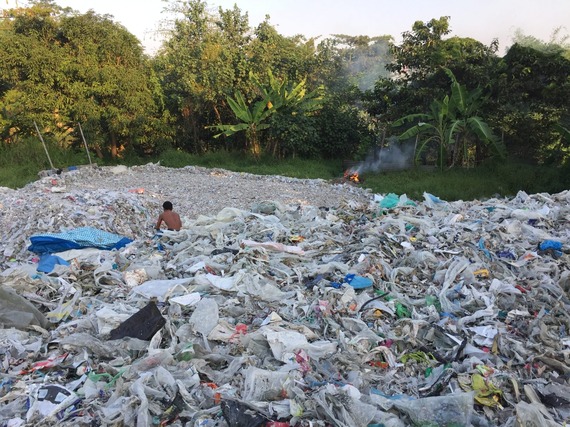 Piles of dumped plastic contamination from imported paper bales in East Java, Indonesia are picked through for any high value materials—metal or flattened PET or HDPE—but the majority of these piles are burned or washed into nearby rivers (Photo credit: Megan Ponder).
Keeping Recycling from Becoming Marine Debris
Oregon DEQ is implementing the 2021 Plastics Pollution and Recycling Modernization Act which goes into effect July 1, 2025. DEQ’s governing body recently adopted rules that require packaging, printed paper, and food serviceware collected for recycling must be sent to responsible end markets that will properly manage contaminants present in that recycling.
Paper and plastic bales containing unwanted contaminants have been shipped overseas to countries lacking proper systems to manage waste. The unwanted material can get disposed improperly and end up as marine debris. The new rules, and new bale quality standards for recycling facilities, will reduce this source of marine debris coming from Oregon.
DEQ must also conduct a needs assessment and report to the Legislature about covered products in litter and marine debris. Contact RethinkRecycling@deq.oregon.gov to learn more.
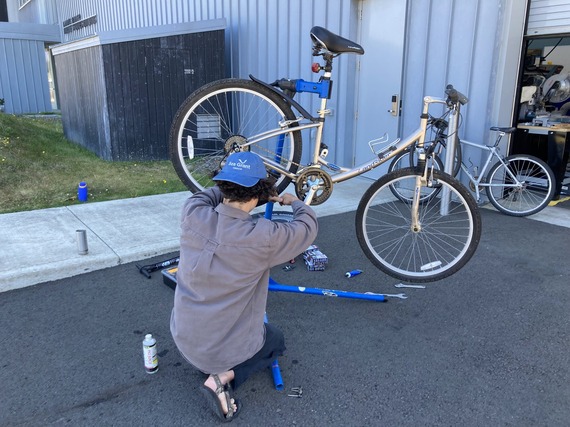 A volunteer repairs a bicycle brought to the Community Repair Fair (Photo credit: Cait Goodwin).
Repair Fair: Fix Things, Learn Skills, Prevent Waste
By fixing and upcycling materials instead of throwing things away, we can keep waste out of our landfills and waterways. On July 20th, Oregon Sea Grant held its first annual Community Repair Fair at Hatfield Marine Science Center in Newport. At this free event, members of the public were invited to bring broken household items to get them repaired by volunteers. “Expert Fixers” shared knowledge and skills to give broken and worn items a second life. Community members brought more than 100 items to the event, including bikes, clothes, lamps, jewelry, tools, appliances, cell phones, and furniture. The fair also featured five skills workshops, and partnering organizations were on hand to provide additional information about waste reduction.
 NOAA Marine Debris Program Updates
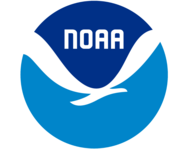 |
|
New Funding Opportunity: Fiscal Year 2025 NOAA Marine Debris Removal and Interception Technologies under the Bipartisan Infrastructure Law
The National Oceanic and Atmospheric Administration’s (NOAA) Marine Debris Program is pleased to announce two Fiscal Year 2025 Notices of Funding Opportunity for both Marine Debris Removal and Interception Technologies under the Bipartisan Infrastructure Law. The NOAA Marine Debris Program will award up to $54 million across two funding opportunities:
Fiscal Year 2025 NOAA Marine Debris Removal under the Bipartisan Infrastructure Law with Letters of Intent due on September 27, 2024, 11:59 p.m. Eastern Time and an applicant webinar will be offered on August 07, 2024 at 3:00 p.m. Eastern Time.
Fiscal Year 2025 NOAA Marine Debris Interception Technologies under the Bipartisan Infrastructure Law with Letters of Intent due on October 09, 2024, 11:59 PM Eastern Time and an applicant webinar will be offered on August 14, 2024 at 3:00 PM Eastern Time.
Learn more here.
|
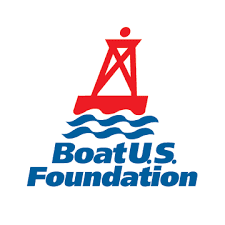 |
|
Funding Opportunity: BoatUS Foundation Abandoned and Derelict Vessel Grant Program
With funding from the NOAA Marine Debris Program provided by the Bipartisan Infrastructure Law, BoatUS Foundation is still accepting applications under the Abandoned and Derelict Vessel Removal Grant Program. The program will award up to $7.5 million for projects between $50,000-$1 million to support the removal of abandoned and derelict vessels throughout coastal and marine areas nationwide. Read more about the opportunity here.
Deadline: August 12, 2024
|
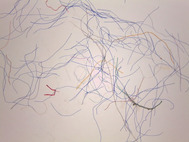 |
|
New Report on Microfiber Pollution Released
The NOAA Marine Debris Program and Environmental Protection Agency’s Trash Free Waters Program, on behalf of the Interagency Marine Debris Coordinating Committee with support from the consulting firm Materevolve and the National Marine Sanctuary Foundation, are pleased to share the Interagency Marine Debris Coordinating Committee Report on Microfiber Pollution. This report, created as a requirement of the Save Our Seas 2.0 Act (P.L. 116-224), provides an overview of microfiber pollution, including a proposed definition of a microfiber, an assessment of the problem, and recommendations for measuring and reducing microfiber pollution. It also outlines a plan with five goals for Federal agencies to reduce microfiber pollution in coordination with stakeholders.
Read the full report here.
(Photo credit: Sherri Mason).
|
 |
|
New Resource: Educator's Guide to MDMAP
The Marine Debris Program is pleased to share a new resource for supporting our participatory science effort, the Marine Debris Monitoring and Assessment Project (MDMAP): “Making a Marine Debris ‘MAP’: A Guide to NOAA’s MDMAP for Educators”.
MDMAP is NOAA’s flagship initiative to measure the amount and types of marine debris on shorelines. Using this standardized collection method, suite of helpful resources, and publicly available data, participants and volunteers can detect differences in marine debris over time, inspire prevention efforts, and inform education and outreach. MDMAP is also a great opportunity to get outside and get to know your local shorelines!
This Guide provides instructions and tips for participating in MDMAP and planning, conducting, and following up on monitoring surveys with student groups. You and your students will head to a local shoreline, search for debris in randomized sections, and record data you will contribute to a global database. While it is not required as a part of the MDMAP protocol, you can easily incorporate a full beach cleanup into your day.
Read more on our blog.
(Photo credit: Denise Harrington).
|
|



